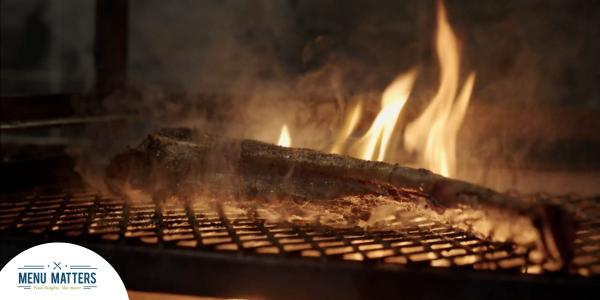
In the jungles of Tulum, Mexico, you’ll find Arca, a restaurant from Executive Chef and Co-Owner Jose Luis Hinostroza. Hinostroza trained at Rene Redzepi’s culinary powerhouse Noma, in Copenhagen, and that training has earned him plenty of accolades at Arca, including a place on “The World’s 50 Best” list. But, although you’ll find plenty of meticulously tweezed dishes, a chef-driven tasting menu, and only three seatings each night – all hallmarks of a fine dining concept – you won’t find a sterile steel kitchen and white tablecloths. Instead, as guests dine in the open-air dining room, one unifying factor comes into focus: fire.
Everything at Arca is cooked over a live fire, which adds smoke and char to an endless variety of ingredients: pumpkin seeds, avocado, seaweed, tomato, and plenty of meat, of course, including prawns, suckling pig, bone marrow, flank steak, the list goes on. In fact, Arca is often called a “fire to table” concept, with dishes going from the open flames to the diner in minutes.
Fire is integral to almost all cooking – evidence that Homo erectus cooked fish over fire nearly 800,000 years ago is said to be the first instance of our human ancestors cooking. The drama of a live fire has held our attention ever since, whether it’s the flame of a tableside bananas foster, the heat of a massive showpiece pizza oven visible from the dining room, or even a backyard grill sending up flames as fat drips onto the coals.
But now live-fire cooking in restaurants is white hot, so to speak, all over again as consumers seek out even more drama and spectacle, even fine dining restaurants have gotten more casual, chefs around the world embrace their history and heritage, and diners look for bolder, more in-your-face flavors. Now restaurants are opening with massive hearths that provide the only source of heat, outdoor-centric concepts are turning grilling and barbecuing into the star of the show, Japanese-inspired izakayas are searing options like yakitori over binchotan charcoal grills, and fire-driven food festivals across the country feature massive spits and dramatic cuts of meat (including plenty of tomahawk steaks) hanging from chains while chefs blow-torch thinner cuts.
Why now? For one, a bit of fire gets attention at a time when many consumers are glued to their phones and don’t engage with their food. Indeed, when we asked consumers about a range of multi-sensory dining options they would be most interested in, nearly a third chose live-fire cooking, while open/exhibition kitchens (where the fire is often visible) were their number one choice. Meanwhile, over a third of Gen Z was interested in tableside presentations like flambé cooking, more than any other generation.
These options not only elevate the dining experience for premium proteins like beef and lamb, but there’s a reason why live-fire cooking is associated with meat from the culinary side, as well: it adds a ton of complementary flavor. Juicy fat, a rich and charred crust, tender meat – it’s just delicious.
If you want to grab customer attention, consider ways you can make fire a more central part of the dining experience. While featuring open hearths or adding tableside experiences may be possible in some operations, even using terms like “fire-kissed” on the menu or showcasing videos of rich meats roasting over fires on social media can give consumers the drama they crave. These days, playing with fire may be a good thing.
Editor’s Note:
Aussie meats are best mates with live fire cooking. The natural flavor of grassfed beef and pasture raised lamb complements that smoke and char. For 4 quick tips on upping your live fire cooking game, give this a quick read.

